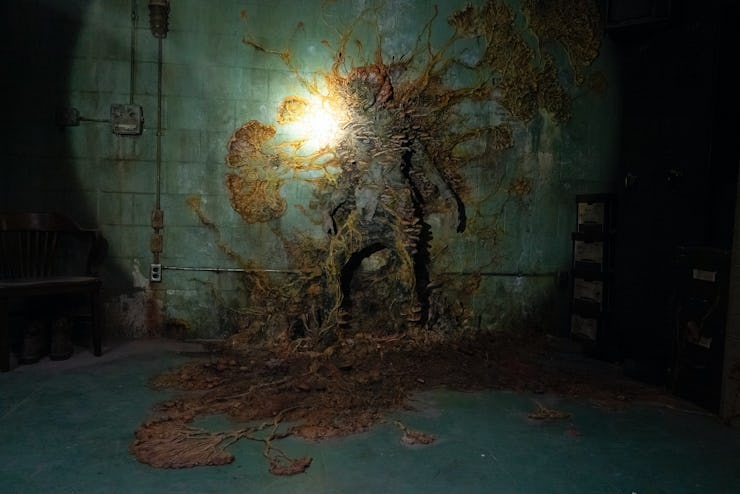The Last of Us Part 3 needs to steal a brilliant invention from the HBO show
Everything is connected.

The prestige adaptation of Naughty Dog’s seminal game The Last of Us remains incredibly faithful to its source material, with some exceptions. One of the biggest changes that co-showrunner Craig Mazin made was to the way the Cordyceps virus spreads and functions in the world, taking inspiration from real-life fungal networks. While so many of the show’s changes make the story more cinematic, this change could easily be translated into an inventive gameplay mechanic that Naughty Dog should use in the inevitable Last of Us Part III.
The change from spores to tendrils — In episode 2 of The Last of Us, Ellie observes a group of Infected writhing in unison under the sun, making the connection that they are all “connected”. Tess explains this further, “the fungus also grows underground. Long fibers like wires, some of them stretching over a mile. You step on a patch of Cordyceps in one place, and you can wake a dozen Infected from somewhere else. Now they know where you are and they come.”
The cause of the apocalypse is a fungal disease called Cordyceps that takes over host bodies and makes them zombie-like creatures. While the game portrayed the virus as an airborne disease spread through spores that characters had to wear gas masks to stay safe from, the show switches this up by creating the idea of an ever-expanding connected fungal network.
According to Mazin, this was a change the team felt they “needed to make.” It is a change rooted in the science of micelle threads that make up fungus. The fungal network was an explanation for Cordyceps and how it spread that works better in the TV format than the game’s spores. But the fungal network is a perfect trick to put back into the games.
Co-Showrunner and creator of The Last of Us, Neil Druckmann shared the sentiment that he wished he had thought of the fungal network during the development of the game during the second episode of the official podcast for the series. While Naughty Dog can’t go back and put this feature into The Last of Us Part I and II, it could easily become a prominent feature in the next chapter of the games.
A new danger for players to worry about — From the first game to its sequel the level design for The Last of Us has pushed towards larger open maps that require the player to traverse massive neighborhoods and structures while keeping in mind enemy locations. This growth naturally complements the idea of a fungal network.
Large game maps could expertly utilize the fungal network as a gameplay mechanic.
Imagine a wide-open landscape like the first Seattle map in The Last of Us Part II. While the spaces are a vast playground of exploration, combat encounters are confined to specific areas that the player must trigger. If a fungal network as depicted in the show existed in-game, then at any point a misstep from the player could suddenly draw a horde to their location.
Combat in The Last of Us Part II pushes the player to have a better understanding of the entire flow of a map, and their place in it in connection to enemies. The fungal network amps this up to eleven, making every step have an impact and pushing the player even further in their ability to understand large maps.
The Last of Us Part II leaves protagonists Abby and Ellie in California. Even in the limited maps players explored in Part II were more wide-open and barer than anything previously encountered. The confined combat encounters of previous entries don’t work as well in this type of environment, but the fungal network from HBO’s adaptation offers the perfect mechanical answer that still keeps the player on their toes in the same way first encountering a clicker does.
Druckmann’s professed love of the fungal network already hints that this could be implemented in future games in the franchise. While HBO learned and built upon its source material, The Last of Us Part III can take cues from the show as well. The fungal network is one idea that could work even better in-game than it does on screen.